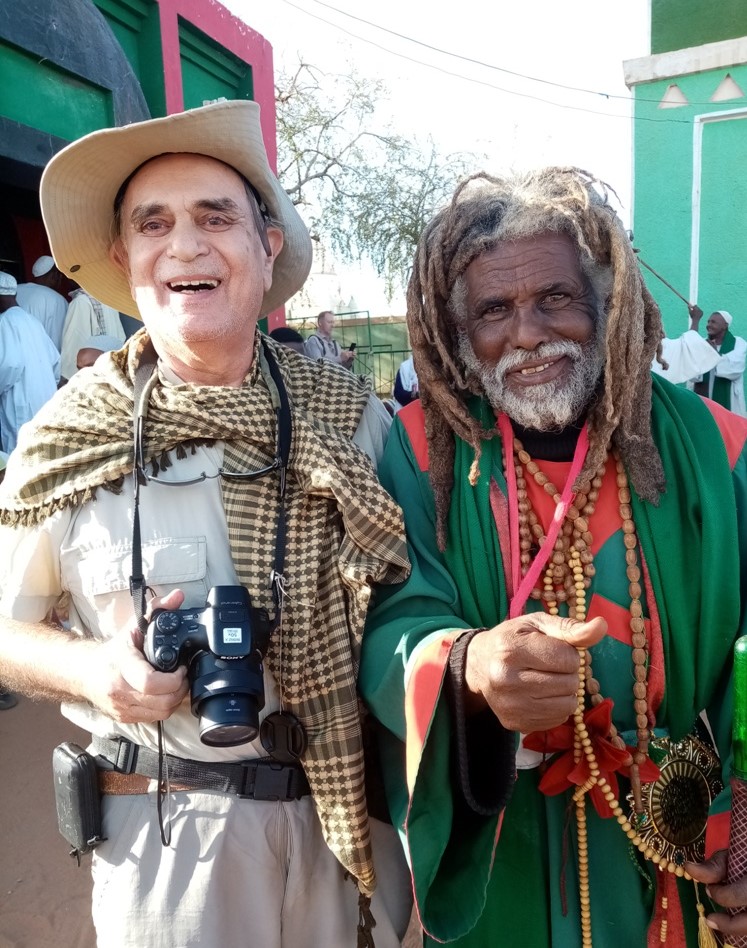Sufi Spiritual Frenzy
Omdurman
Sudan
Friday Evening
January 31, 2020
This report was filed by Ala Kheir, John Burns and Ibrahim Algrefwi for Brownbook part of the the Guardian Africa Network on February 5, 2016.
In Omdurman, the largest city in Sudan, the Qadiriyya Sufi order meets every Friday outside Sheikh Hammed Al Nil Mosque which houses the tomb of their 19th century Sufi leader.
Sudan has one of the largest Sufi communities in the world. Sufism is a branch of Islam often seen as mystical due to its followers’ pursuit of a personal, inner path to G-d. What unites each Sufi order is the belief that a path to God can be found through dhikr – absolute absorption in worship during which prayers, dances and spins may be repeated with enough fervour to induce a trance.
As the sun lowers, a sound system crackles to life with Islamic chants. Followers sway backwards and forwards and form a large circle around a troupe of musicians. ‘I’ll tell you a secret – if you’ll believe me,’ shouts Ahmed Mohamed Alamin, a 30-year old pharmacist, over raucous cymbals and drums. ‘During dhikr, we fly to the heavens.’
In stark contrast to the white jalabiya [long dress] worn by most male members of the assembly, the dervish elders distinguish themselves by sporting more brightly coloured and patterned outfits.
Dervish costumes range from simple green jalabiyas, trimmed and cuffed with orange hems, to more flamboyant frocks layered with technicolour khirqas, or strips of fabric. Some wear sunglasses while others sport fluorescent sashes embroidered with hadiths. Most dervishes, though, wear garlands of wooden misbaha beads, and a lot of green.
A woman in the crowd explains why green is such a significant colour for the Sufi order. ‘I’m wearing a beautiful green jalabiya. It was a gift from my sheikh and looks like the typical great Sufi dresses. It symbolises the simplicity and the calm of Sufism, and its charm and beauty.’ Most cloaks and garments, she says, are bestowed to the dervishes by the order’s sheikh during formal initiation ceremonies.
While the sound system continues to reverberate, melodic chants and Qur’anic recitations ring out overhead. The drumming crescendos and incense smoke drifts through the air as the crowd sways, claps and shouts with more emotion than rhythm.
The way worshippers dress is also a sign of their standing within the Sufi order. ‘This jalabiya and the misbaha [prayer beads] that I wear define my rank in the dhikr and the tariqa,’ one woman says.
Though some sessions have lasted 24 hours, the dhikr usually comes to a relatively abrupt stop. Worshippers slap each other on the back and exchange well wishes, before picking their way back through the dry, dusty necropolis of Sheikh Hamed Al Nil mosque toward the fleet of waiting rickshaws.


Add new comment